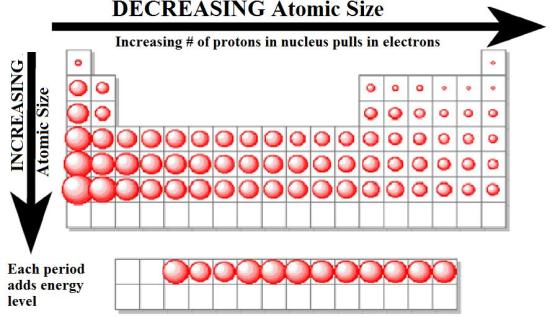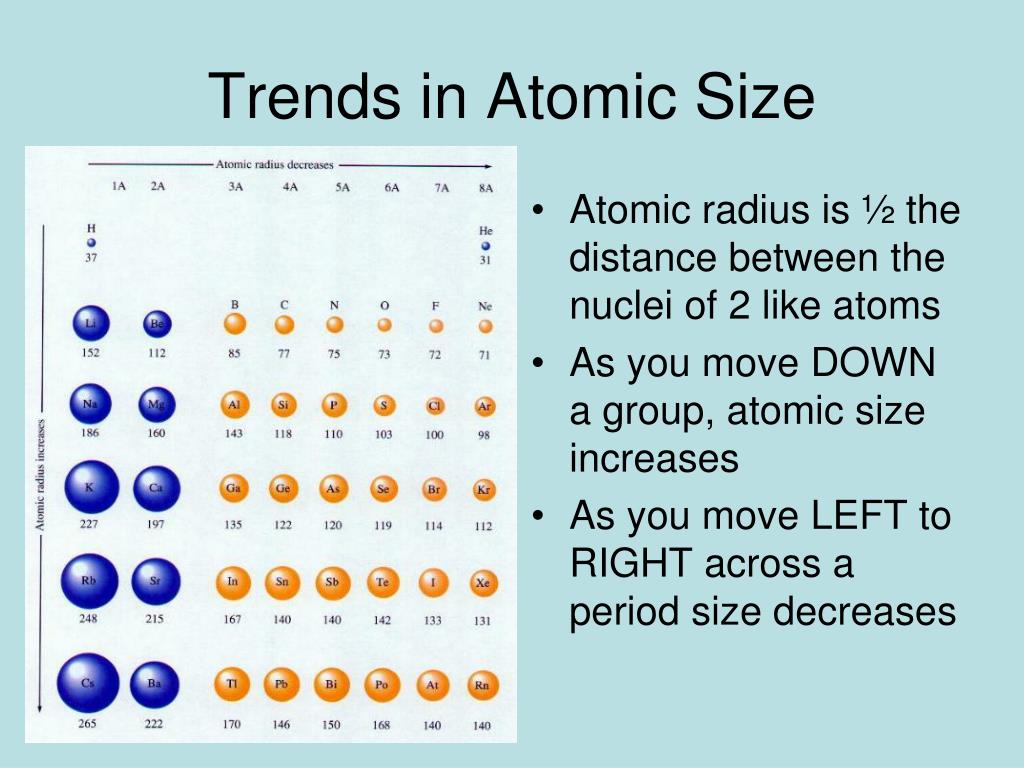

alkali, and alkaline-earth metals, tend to be good reducing agents, as their valence electrons, whose radial orbit DEFINES the atomic radius, tend to be readily oxidized.

On the other hand, the larger elements, i.e. nitrogen, fluorine, oxygen, TEND to be very powerful oxidants, and this is also manifested by their small atomic size. Excluding the Noble Gases, the smaller atoms from the right hand side, i.e. And the more stable A minus is, the more likely HA will donate a proton in solution. So if you think about that for HA, the conjugate base is A minus. The more stable the conjugate base, the more likely the asset is to donate a proton. It follows that the SMALLEST atoms derive the right of the Table as we face it. The stability of the conjugate base, can also affect the strength of the acid. Of course, the diagram shows NO data (it should do so), but the relative size of the atoms across the Period, and down the Group is clear. And the best metric that illustrates this trend is the well-known diminution of atomic radii across the Period from left to right? And of course, we should look at some data. Now it is a fact that the nuclear charge is SHIELDED very poorly by incomplete electronic shells. The chemistry and atomic structure of the elements is a contest between (i) nuclear charge, conveniently represented by #Z_"the atomic number"#, and (ii) shielding by other electrons. We have looked at the formal definition of ionisation energy previously and it’s really important that you are comfortable with that first. #"Increase in atomic radii down a Group, a column of the Periodic"#"Table."# Today we are going to take a look at the 3 Factors Affecting Ionisation Energy in atomic structure.


 0 kommentar(er)
0 kommentar(er)
